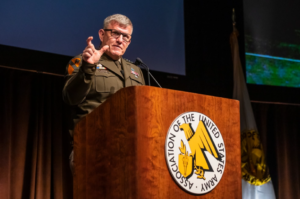
The Army’s “major effort” to experiment with human-machine integration (HMI) in its units is underway, a lead official detailed on Wednesday, with the service currently testing with two platoon formations. Gen. Jim Rainey, head of Army Futures Command (AFC), told reporters the Army is planning to conduct an HMI demonstration at its Project Convergence capstone event this coming spring and aims to have full prototype HMI platoons in place by early 2025 for further experimentation. “This is happening. It’s going…

 By
By 











